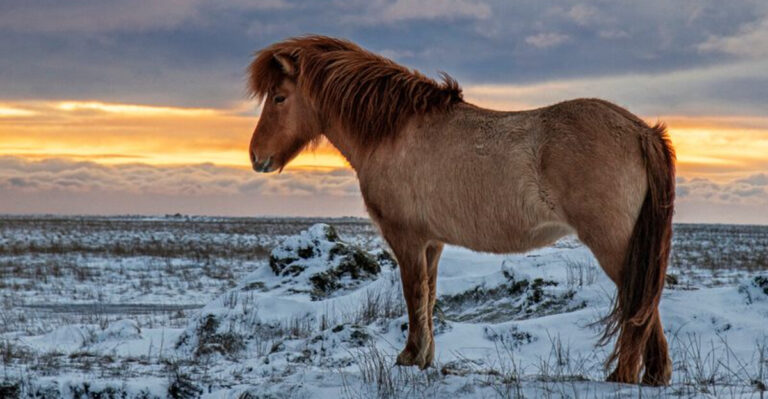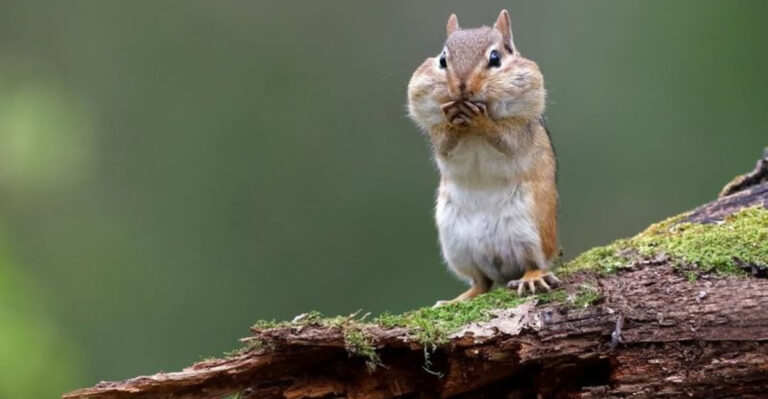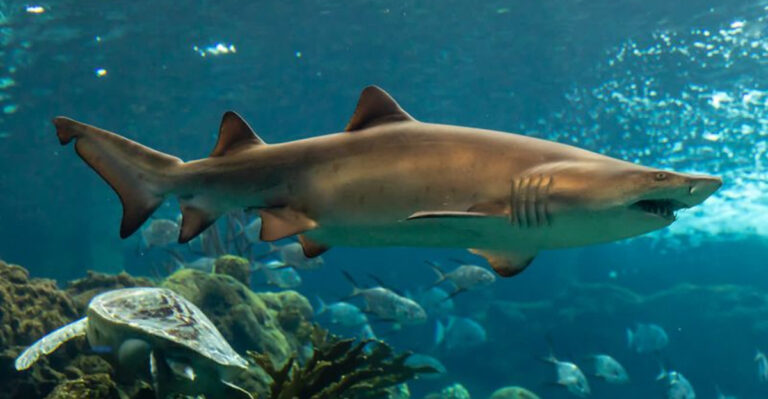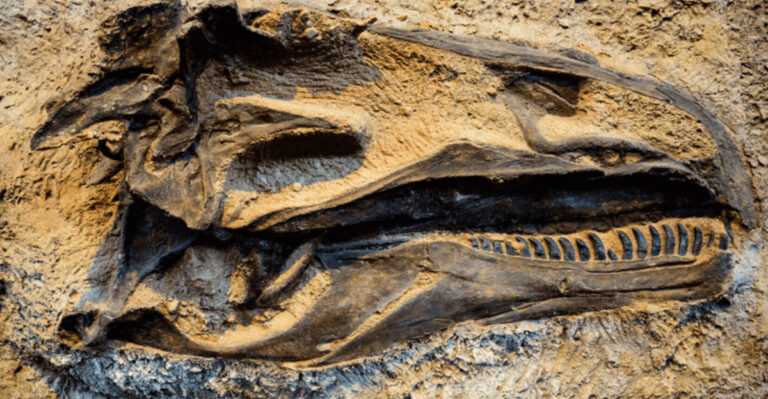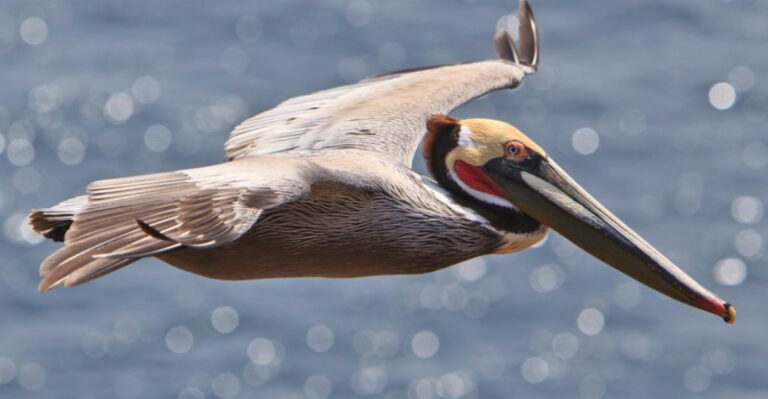13 Huge Prehistoric Animals That Ruled The Earth Before Dinosaurs
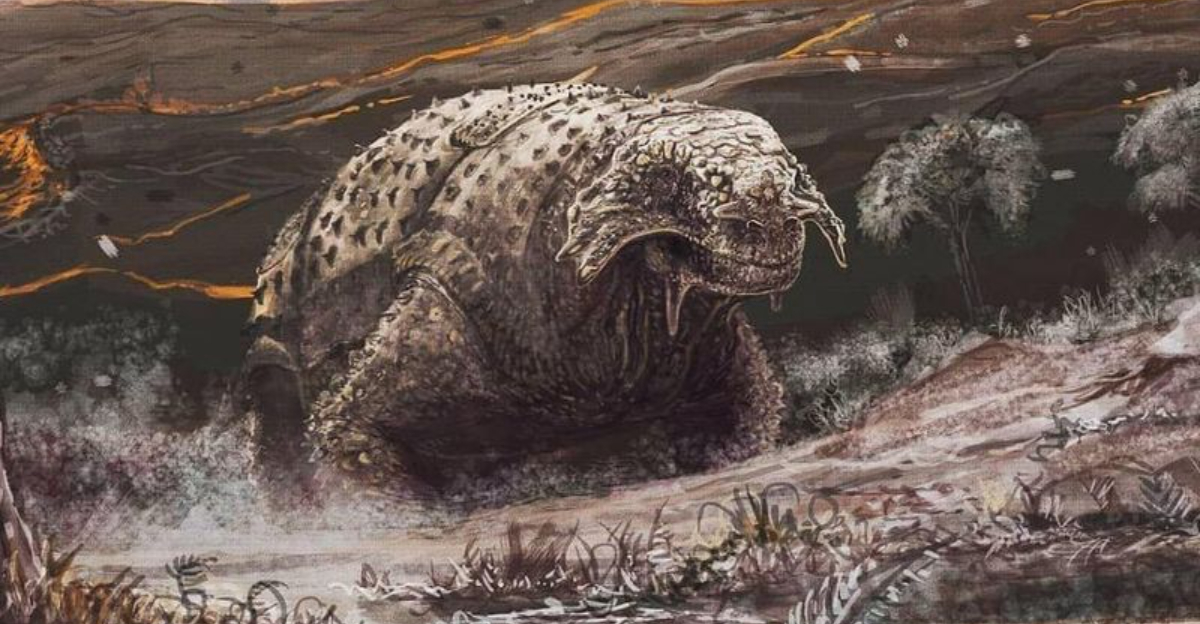
Long before T-Rex roamed the planet, Earth was home to some truly bizarre and massive creatures. While dinosaurs get most of the spotlight in movies and books, they weren’t the first giant beasts to dominate our world.
The prehistoric oceans, skies, and lands were filled with strange animals that would seem alien to us today. These forgotten giants paved the way for the dinosaurs that would follow millions of years later.
1. Dimetrodon
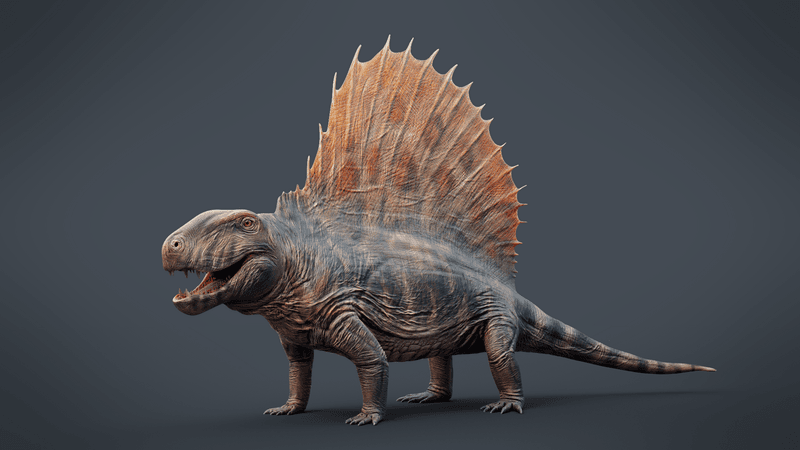
Often mistaken for a dinosaur, Dimetrodon actually predated dinosaurs by millions of years! This massive predator roamed Earth about 295-272 million years ago during the Permian period. With its distinctive sail-like structure on its back, Dimetrodon could grow up to 15 feet long.
The sail wasn’t just for show – scientists believe it helped regulate body temperature by collecting or releasing heat. Dimetrodon was actually more closely related to mammals than to dinosaurs, making it one of our distant evolutionary cousins.
As a top predator of its time, it had a mouth full of different-sized teeth – hence the name Dimetrodon, meaning ‘two measures of teeth.’
2. Arthropleura
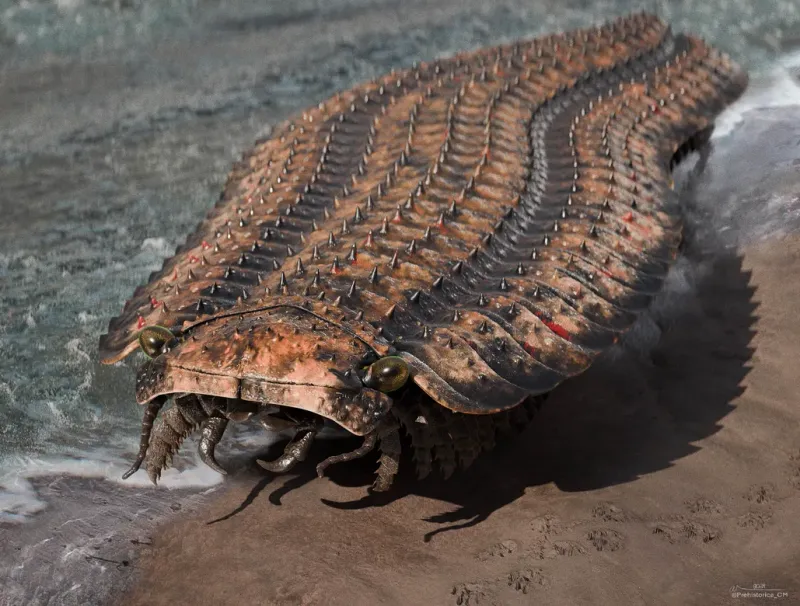
Imagine a millipede as long as a school bus crawling through ancient forests! Arthropleura could grow over 8 feet long, making it the largest known land invertebrate ever. This massive bug-like creature lived approximately 315-299 million years ago during the Carboniferous period.
Unlike today’s millipedes, Arthropleura wasn’t a predator – it munched on the abundant plant matter in the oxygen-rich forests of its time. The extra oxygen in Earth’s atmosphere back then allowed arthropods like Arthropleura to grow to incredible sizes.
Scientists have found fossilized footprints of this giant, giving us clues about how it moved across the prehistoric landscape.
3. Meganeura
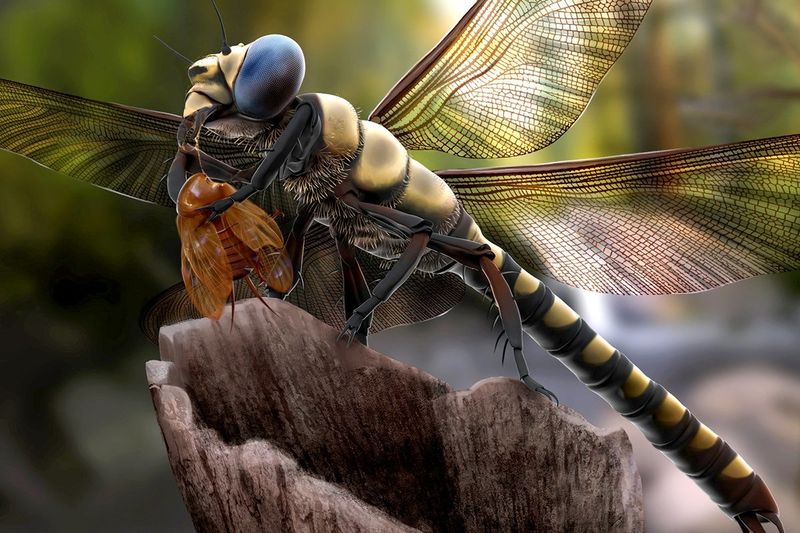
Meganeura was essentially a dragonfly on steroids! Living around 300 million years ago during the late Carboniferous period, these insects had wingspans reaching up to 2.5 feet – about the size of a modern crow. Regular dragonflies suddenly don’t seem so big, do they?
The secret behind Meganeura’s giant size was Earth’s atmosphere, which contained much more oxygen than today – around 35% compared to our current 21%. This oxygen-rich environment allowed insects to grow to extraordinary sizes since they breathe through their bodies rather than lungs.
Fossil evidence shows Meganeura was a skilled aerial predator, likely capturing other insects mid-flight with its powerful legs.
4. Titanoboa
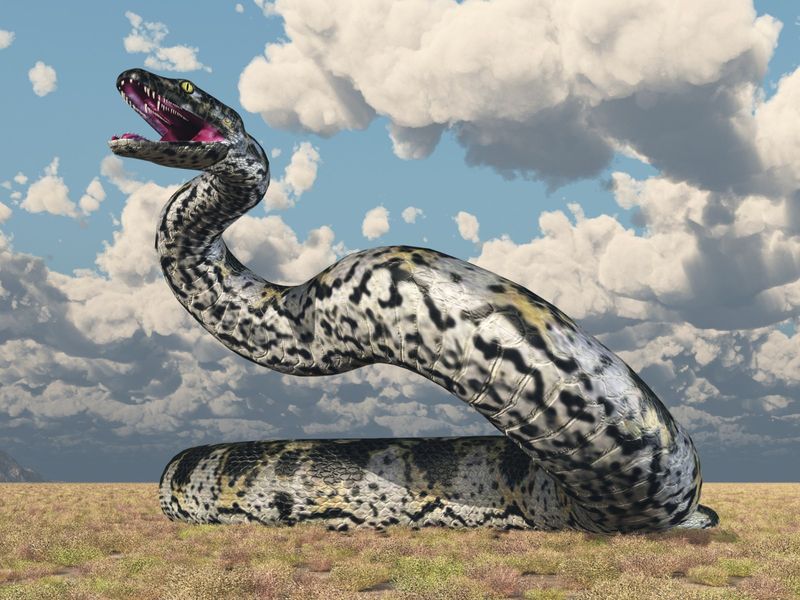
Move over anaconda – Titanoboa was the true king of snakes! This monstrous serpent slithered through the tropical forests of what is now Colombia about 60-58 million years ago, shortly after the dinosaurs went extinct. Growing up to 50 feet long and weighing over a ton, Titanoboa is the largest snake ever discovered.
Scientists estimate Titanoboa could crush prey with a force of 400 pounds per square inch – strong enough to break bones. As a constrictor, it would squeeze its victims before swallowing them whole.
Titanoboa thrived in an extremely hot climate, suggesting that rising global temperatures might have contributed to its enormous size.
5. Anomalocaris
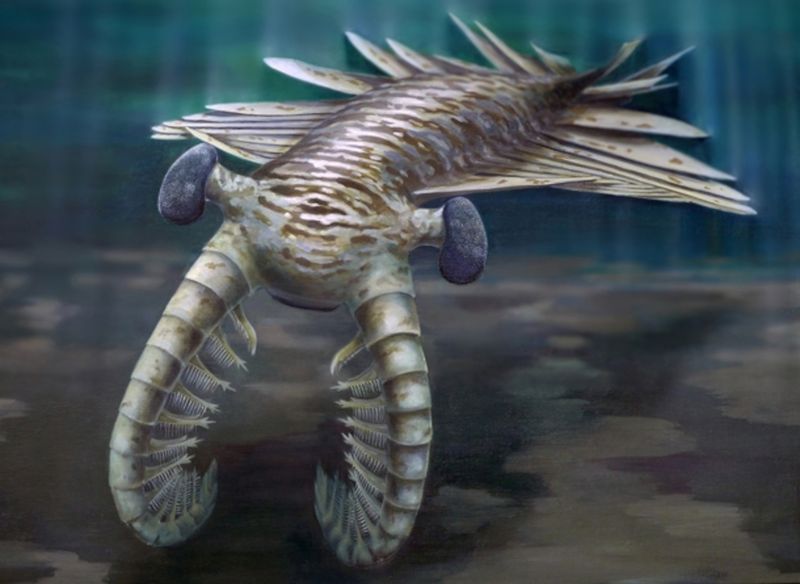
Meet the world’s first super predator! Anomalocaris ruled the prehistoric seas about 520-490 million years ago during the Cambrian period. Despite being only 3 feet long, it was a giant compared to other marine life of its time and stood at the top of the food chain.
Anomalocaris had a bizarre appearance by today’s standards – with large compound eyes, a circular mouth full of sharp plates, and two large front appendages perfect for grabbing prey. Its name means ‘abnormal shrimp’ because early fossils were initially misidentified.
This creature swam using fin-like flaps along its body and could likely move with impressive speed to chase down smaller creatures.
6. Pulmonoscorpius
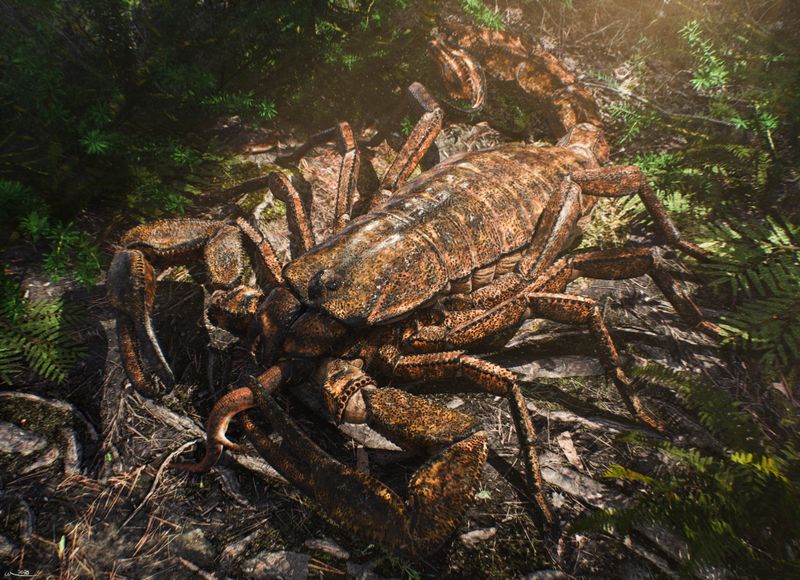
Imagine a scorpion the size of a small dog scuttling around your backyard! Pulmonoscorpius lived approximately 340-335 million years ago during the Early Carboniferous period and grew to over 2 feet long. That’s roughly ten times larger than most modern scorpions!
Armed with powerful claws and a venomous stinger, Pulmonoscorpius was a formidable predator. Its name means ‘breathing scorpion,’ referring to the book lungs it used for respiration – similar to modern scorpions.
Like other giant arthropods of its time, Pulmonoscorpius benefited from the oxygen-rich atmosphere that allowed these invertebrates to reach extraordinary sizes never seen since.
7. Jaekelopterus
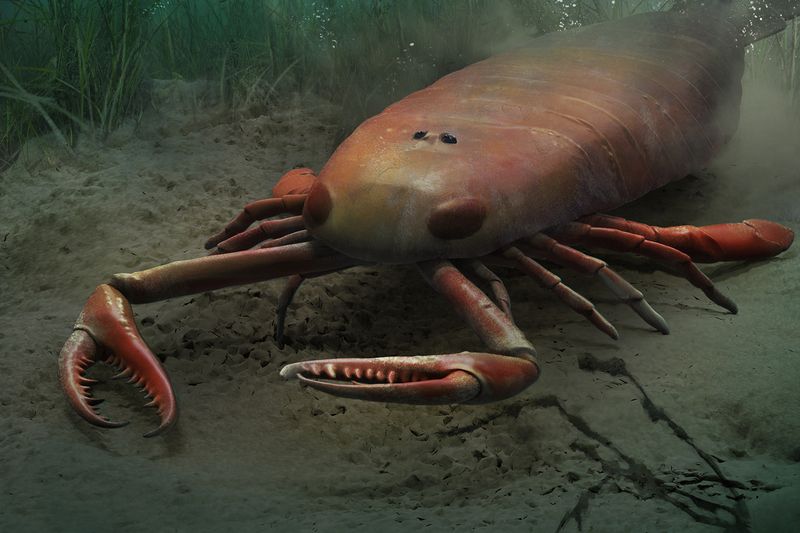
Jaekelopterus wasn’t actually a scorpion but a eurypterid – commonly called a sea scorpion. This aquatic monster lived around 390 million years ago during the Devonian period and could reach lengths of over 8 feet, making it the largest arthropod ever discovered!
Armed with massive front claws that could snatch prey with lightning speed, Jaekelopterus patrolled the ancient rivers and coastal waters as an apex predator. Its body was covered in a tough exoskeleton that provided excellent protection.
Despite its intimidating size and appearance, Jaekelopterus was likely an ambush predator, hiding in murky waters before lunging at unsuspecting fish and other aquatic creatures.
8. Inostrancevia
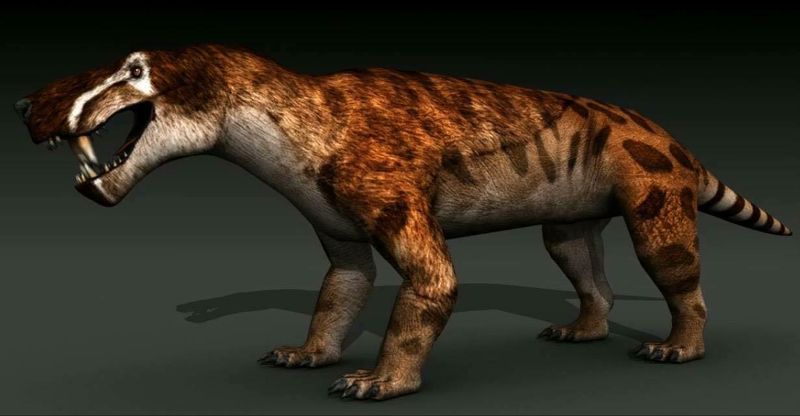
Before saber-toothed cats, there was Inostrancevia! This fearsome predator lived around 260-254 million years ago during the Late Permian period. Growing up to 11.5 feet long, Inostrancevia was one of the largest predators of its time.
Though reptilian in appearance, it was actually a gorgonopsid – a group of animals more closely related to mammals than to reptiles. Inostrancevia’s most distinctive features were its enormous saber teeth, which could grow up to 5 inches long, perfect for taking down prey.
These creatures were among the first to show mammal-like characteristics, representing an important evolutionary link between reptiles and the mammals that would later evolve.
9. Dickinsonia
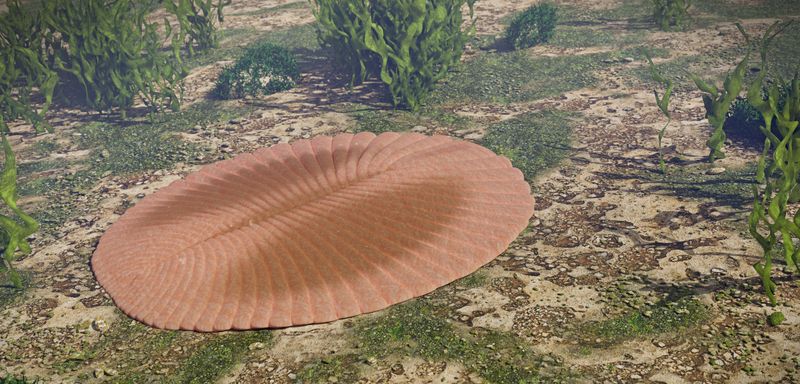
One of Earth’s earliest large animals, Dickinsonia existed about 558-555 million years ago during the Ediacaran period – even before the Cambrian explosion of life! These strange creatures looked like oval-shaped quilted pancakes and could grow up to 4.5 feet across.
Scientists debated for decades what Dickinsonia actually was – a plant, fungus, or animal? Recent chemical analysis of fossils finally confirmed it was indeed an animal, possibly one of the earliest complex animals on Earth.
Dickinsonia had no mouth, gut, or organs that we can identify. It likely absorbed nutrients directly through its body surface while lying flat on the seafloor – a bizarre lifestyle unlike anything alive today!
10. Helicoprion
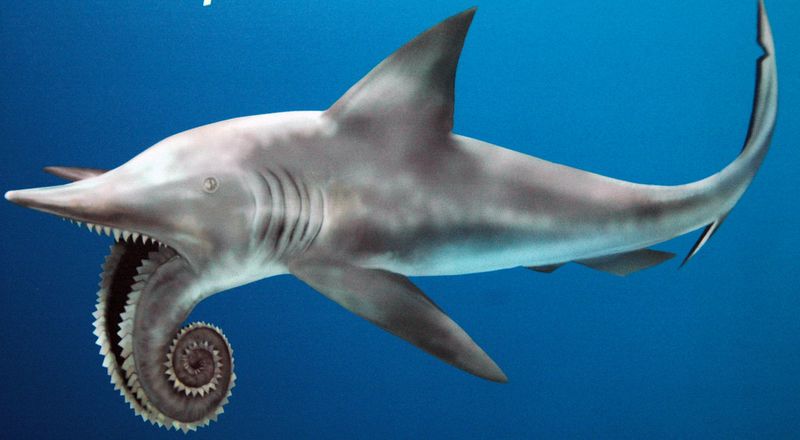
Helicoprion might be the strangest shark that ever lived! Swimming in ancient oceans 290-270 million years ago during the Permian period, this bizarre creature had a lower jaw with teeth arranged in a spiral pattern – like a circular saw blade!
Growing up to 25 feet long, Helicoprion used its peculiar tooth whorl to slice through the soft bodies of squid and other prey. For years, scientists struggled to figure out how this spiral of teeth fit into the shark’s mouth, with some early reconstructions placing it on the nose or tail.
Modern research suggests the whorl was located in the lower jaw, with new teeth emerging from the center of the spiral as older ones moved outward.
11. Opabinia
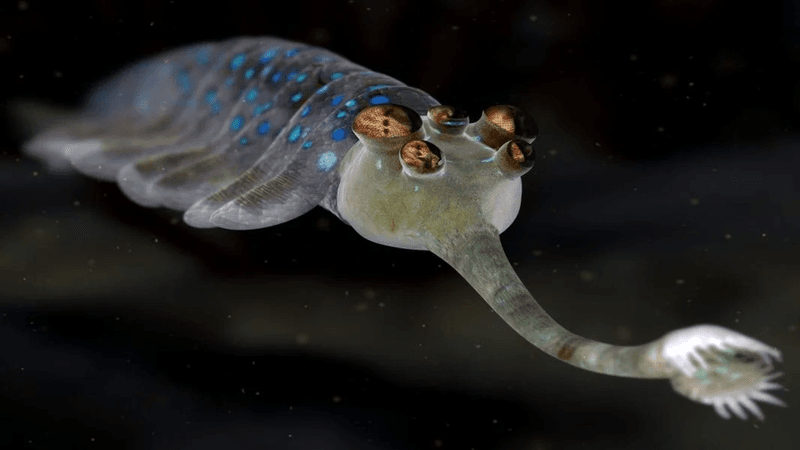
When paleontologists first presented Opabinia to colleagues in the 1970s, the audience laughed because it looked too bizarre to be real! This 5-inch creature lived approximately 505-487 million years ago during the Cambrian period and had one of the strangest body designs ever discovered.
Opabinia’s most notable features included five eyes on top of its head and a flexible frontal appendage that resembled a vacuum cleaner hose with a claw at the end. This bizarre trunk was likely used to catch prey and pass it back to its mouth.
Despite its small size, Opabinia represents one of evolution’s early experiments with different body forms during the explosion of animal life in the Cambrian period.
12. Scutosaurus
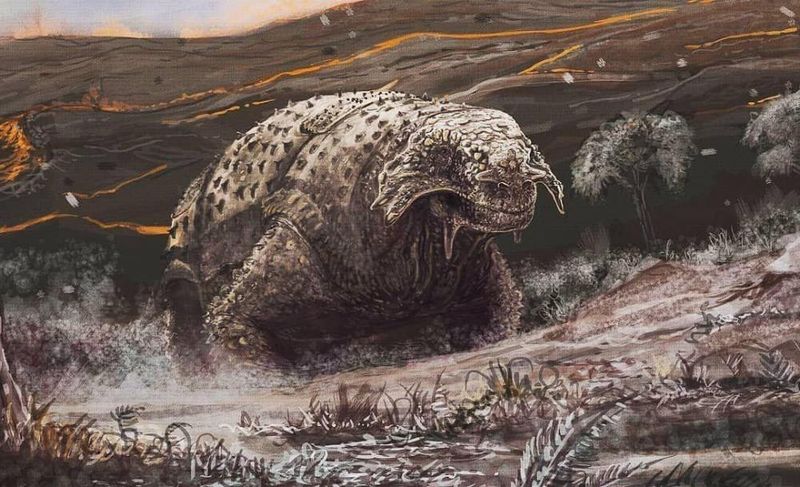
Scutosaurus was the ancient world’s version of a tank! Living around 265-254 million years ago during the Late Permian period, this heavily-armored herbivore could grow up to 10 feet long. Its name literally means ‘shield lizard’ due to the bony plates covering its body.
Despite looking somewhat like a turtle without a shell, Scutosaurus was actually a pareiasaur – a group of prehistoric reptiles that were distant relatives of turtles. These creatures roamed in herds across what is now Russia, using their tough armor for protection against predators.
Their strong jaws and peg-like teeth were perfect for grinding tough plant material in the harsh Permian environments.
13. Eogyrinus
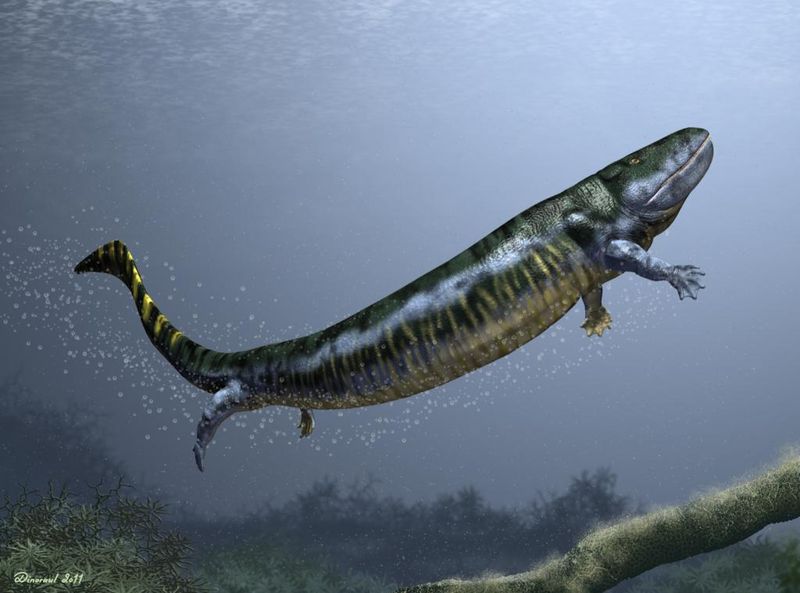
Before crocodiles ruled the waterways, there was Eogyrinus! This massive amphibian lived approximately 315 million years ago during the Carboniferous period and could grow up to 15 feet long – about the size of a modern crocodile.
Eogyrinus had a long, slender body with a flattened head and rows of sharp teeth, giving it a very crocodile-like appearance despite not being a reptile. As an amphibian, it likely needed to return to water to reproduce, laying eggs in aquatic environments.
A top predator of its time, Eogyrinus lurked in the swamps and rivers of what is now England, ambushing fish and other creatures that came too close to the water’s edge.

